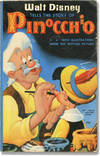
Ensayo de una memoria sobre un nuevo método de medir las montañas,: por media del termómetro, y el agua hirviendo: seguida de un apéndice Que contiene algunas observaciones muy importantes y útiles para la mejor inteligencia de dicha Memoria.
by CALDAS, Francisco José de
- Used
- Hardcover
- first
- Condition
- See description
- Seller
-
London, United Kingdom
Payment Methods Accepted
About This Item
Burdeos: Imprenta de Lawalle Jóven y Sobrino,, 1819. Discovering the hypsometric principle First edition of the posthumously published work in which Caldas describes his principal scientific achievement, the discovery of a method for measuring altitude by the boiling point of pure water. Caldas (1768-1816), a self-taught scientist - and a lawyer and military engineer - from Popayán, New Granada, independently discovered the hypsometric principle and in 1801 constructed the first hypsometric thermometer. Later that same year he met Alexander von Humboldt, who had heard of Caldas and was impressed by the quality of his work given his extreme academic isolation. "Humboldt trained Caldas in many scientific methods and introduced him to new instruments; when the group travelled to Chile Humboldt began to teach him botany, which would continue to be his focus for many years" (NHM). Caldas went on to become director of the Astronomical Observatory of Santa Fe and to establish El Semanario, the first weekly geographical periodical in the Viceroyalty. During the Spanish American Reconquista he was executed by firing squad aged 48 for his involvement in the fight for New Granada's (modern-day Colombia's) independence. Quarto (230 x 185 mm). Contemporary dark brown sheep, smooth spine backed with lighter brown sheep, new endpapers. Folding engraved plate of thermometer facing p. 20, tables to text. Without the half-title. Extremities lightly worn, a few scuffs to boards, front endpapers a little tight causing some stiffness in hinge, three discreet paper repairs to gutter of title page, the contents generally crisp and clean with just a few neat pencilled marginal notes and a few instances of faint foxing. A very good copy. See Natural History Museum's biography of Caldas, JSTOR Global Plants database.
Reviews
(Log in or Create an Account first!)
Details
- Bookseller
- Peter Harrington
(GB)
- Bookseller's Inventory #
- 139366
- Title
- Ensayo de una memoria sobre un nuevo método de medir las montañas,
- Author
- CALDAS, Francisco José de
- Book Condition
- Used
- Binding
- Hardcover
- Place of Publication
- Burdeos: Imprenta de Lawalle Jóven y Sobrino,
- Date Published
- 1819
Terms of Sale
Peter Harrington
All major credit cards are accepted. Both UK pounds and US dollars (exchange rate to be agreed) accepted. Books may be returned within 14 days of receipt for any reason, please notify first of returned goods.
About the Seller
Peter Harrington
Biblio member since 2006
London
About Peter Harrington
Since its establishment, Peter Harrington has specialised in sourcing, selling and buying the finest quality original first editions, signed, rare and antiquarian books, fine bindings and library sets. Peter Harrington first began selling rare books from the Chelsea Antiques Market on London's King's Road. For the past twenty years the business has been run by Pom Harrington, Peter's son.
Glossary
Some terminology that may be used in this description includes:
- New
- A new book is a book previously not circulated to a buyer. Although a new book is typically free of any faults or defects, "new"...
- Title Page
- A page at the front of a book which may contain the title of the book, any subtitles, the authors, contributors, editors, the...
- Plate
- Full page illustration or photograph. Plates are printed separately from the text of the book, and bound in at production. I.e.,...
- Hinge
- The portion of the book closest to the spine that allows the book to be opened and closed.
- Gutter
- The inside margin of a book, connecting the pages to the joints near the binding.
- Spine
- The outer portion of a book which covers the actual binding. The spine usually faces outward when a book is placed on a shelf....
- First Edition
- In book collecting, the first edition is the earliest published form of a book. A book may have more than one first edition in...
- Tight
- Used to mean that the binding of a book has not been overly loosened by frequent use.
- Quarto
- The term quarto is used to describe a page or book size. A printed sheet is made with four pages of text on each side, and the...
- Crisp
- A term often used to indicate a book's new-like condition. Indicates that the hinges are not loosened. A book described as crisp...





